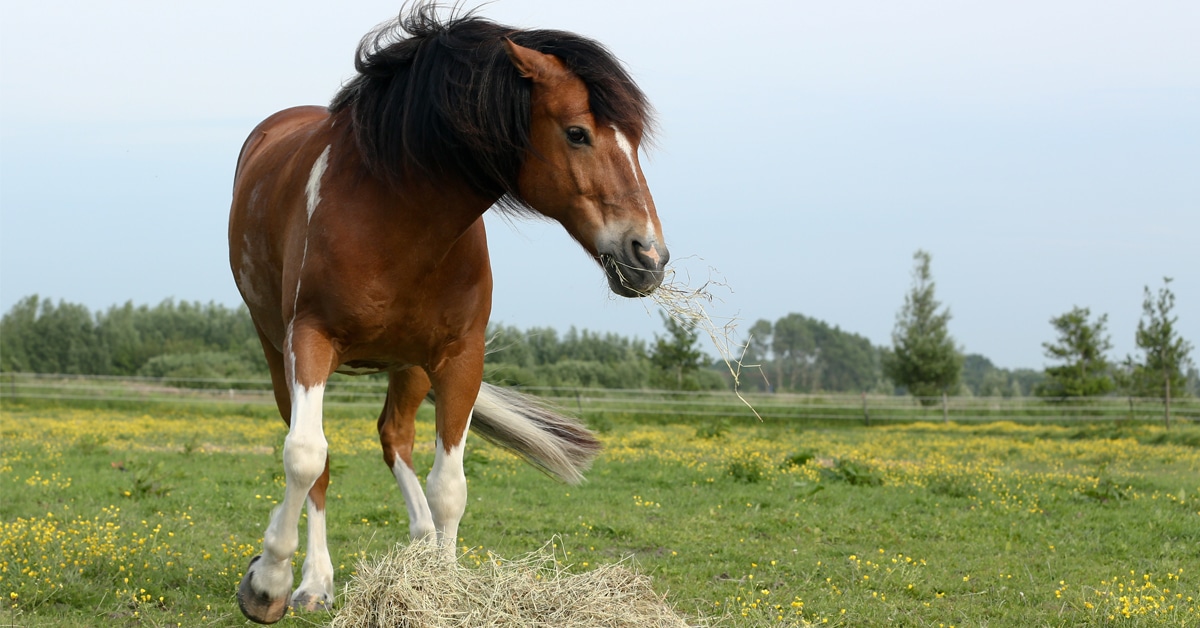Caused by the bacterium Burkholderia mallei, glanders is a serious disease in horses that has fortunately not been prevalent in North America since the 1930s. However, in the past year glanders has made headlines in Germany and Brazil.
A long-established disease
Glanders is an ancient disease known throughout history and first described by early Greek and Roman writers including Aristotle. It was a major problem for cavalry horses because it is highly contagious, spreading from one horse to another by tiny droplets of pus or mucus shot into the air when the horse coughs, by direct contact with the pus at feeding troughs, or by physical contact between animals.
While most commonly seen in horses, donkeys, and mules, glanders can also be caught by camels, guinea pigs, and hamsters. Carnivores including wild cats, bears, wolves, and dogs may catch glanders by eating infected meat. It can also be transmitted to humans and is even considered to have potential as a bioweapon. As far back as World War I, B. mallei was intentionally used to infect animals and humans.
While glanders is fatal in most cases, horses are unique because some (not all) horses can carry the disease without symptoms and still be capable of infecting other horses.
Three forms, no cure
There are three classical forms of glanders, according to Dr. Katharina Lohmann of the University of Saskatchewan’s Western College of Veterinary Medicine. The first type, sometimes called “farcy,” appears as infected ulcers in the horse’s skin and in the lymph nodes. Lymphatic vessels can become visibly swollen and develop nodules (“farcy buds”) that ulcerate and drain. The nasal form of glanders occurs when the ulcers develop on the nasal septum, giving rise to a sticky yellow discharge. In the pulmonary form, horses develop pneumonia and have small, tubercle-like nodules in the lungs, leading to coughing, weakness, and often diarrhea. At autopsy, nodules are usually found in the liver and spleen.
According to a report published by the OIE (World Organization for Animal Health), there is currently no medical treatment that will cure the disease in animals. To prevent the disease from spreading, animals who test positive are euthanized.
Cases around the globe
Even though it has largely been eliminated in many countries, cases of glanders are frequently seen in parts of South America, the Middle East, Asia, and Africa. Dr. Scott Weese of the University of Guelph Ontario Veterinary College wrote in his “Worms and Germs” blog about an outbreak of glanders in 2010 in the zoo in Tehran, Iran, among some tigers and lions kept there. One tiger died, apparently of glanders, and a significant number of lions also died or were euthanized because they tested positive for glanders. There is some dispute about the possible source of the disease, but Weese notes that glanders is endemic in Iran and could have been passed on in a number of ways.
In October, 2008, the Longines Global Champions Tour of show jumping was scheduled to be held in São Paulo, Brazil. On September 8th, glanders was diagnosed in a horse living in the region. The show was postponed for a week until additional testing and security measures could take place. Horses that had been shipped from that part of Brazil to other countries in the preceding six months were also tested, and no other cases were found or developed after the competition.
In April of 2015, a horse who had been stabled at the Deodoro facility in Rio de Janeiro, Brazil, site of the equestrian events in the 2016 Olympic Games, also tested positive. Somewhat closer to home, five Mexican donkeys were found to have wandered across the US/Mexico border near Presidio, Texas, in May of 2015, and one tested positive for glanders.
The mystery in Germany
The case of a horse in Germany attracted particular attention. Born in May of 2008, and never having set foot outside of Germany, the horse was scheduled to be exported to another country. As a result, he was given a number of routine tests even though he appeared healthy. The test for glanders came back positive. That blood test was redone by the National Reference Laboratory, and again was positive. That lab then conducted a second test which further confirmed the diagnosis. The horse was euthanized and necropsied, but no bacteria were found in his internal organs; however, the scabs on the skin samples tested with PCR (polymerase chain reaction to obtain DNA) did show infection with Burkholderia mallei, which was confirmed on January 27, 2015.
The other horses at the farm were all tested multiple times over a period of several weeks, and the farm itself was cleaned and disinfected. (Weese points out that the bacteria is relatively easy to get rid of in this way, as it is killed by most disinfectants and by sunlight.)
The puzzle, says Lohmann, is figuring out where this horse picked up the infection. While he had never traveled out of Germany, reports stated it is possible that he had indirect contact with horses from South America. No other cases from Germany have been reported.
Lohmann comments that this is an example of the systems aimed at eliminating these illnesses working well. This horse had no symptoms, but because routine testing is required for horses being moved from one country to another, this case of glanders was caught and prevented from spreading. “This is why we have these requirements,” she says. “The horse never left Germany, so there were no other horses affected.”
Import restrictions
Since this incident, the Canadian Food Inspection Agency (which also regulates horses coming into Canada) has added restrictions on horses being imported permanently or temporarily from Germany which are stricter than those required for other EU countries. The site advises:
For Germany, the following must be certified:
- All premises on which the animal(s) have resided in the past 6 months must have been free from clinical and epidemiological evidence of Glanders infection during the 24 months immediately prior to movement of the animal(s) off the premises.
- The horses must have been tested with a complement fixation test or, where applicable, an alternate test acceptable to CFIA for Glanders, with negative results, on samples taken within the 30 days prior to export to Canada.
During post-entry quarantine in Canada, horses must again be tested for glanders. As these regulations could change, anyone planning to import a horse from Germany or export a horse there with plans to return to Canada should check the inspection.gc.ca website for updated information.
Like most Canadian veterinarians, Lohmann has never actually seen a case of glanders – and doesn’t expect to. “These isolated cases shouldn’t make people worried about the disease. As I said, these are examples of how well our system is working. But we should remember that while glanders has been eradicated in Canada, it is still out there in the world. It’s too soon to let down our guard.”
The Latest










